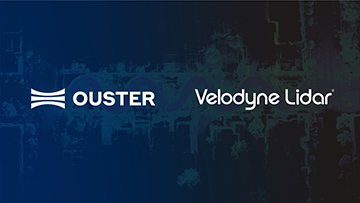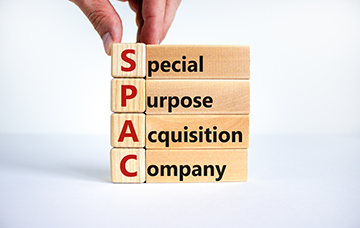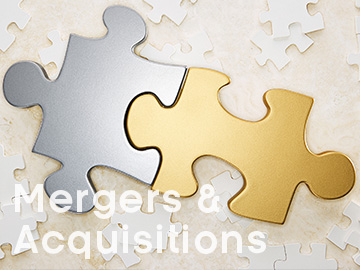
[Image: Velodyne/Ouster]
In early November, two prominent developers and suppliers of lidar sensors and systems—Silicon Valley–based Velodyne Lidar and San Francisco–based Ouster—agreed to what both firms are characterizing as a “merger of equals.” Assuming shareholder approval at the two companies, the all-stock deal is expected to close by mid-2023.
In a joint press release, Velodyne and Ouster maintained that the merger would “drive significant value creation and result in a strong financial position through robust product offerings, increased operational efficiencies and a complementary customer base in fast-growing end-markets.” The deal is the latest example of consolidation in the lidar business, an area that some suggest currently suffers from too many companies chasing a market that’s facing some unexpected headwinds.
SPAC aftermath
Both Velodyne and Ouster were among the group of lidar firms that went public during the 2020–21 boom in public offerings managed through so-called special-purpose acquisition companies (SPACs). Such publicly traded “blank check” companies are launched specifically to find a promising private company in which to invest; when the target company is found, it merges with the SPAC and begins trading as a public company through the SPAC vehicle.

[Image: Dzmitry Dzemidovich/Getty Images]
SPACs became incredibly popular in 2020 and 2021 as a way for companies to go public without the logistical and legal complications of a traditional initial public offering. During that boom, lidar companies proved a particularly tempting target for SPAC investors.
Velodyne, an early pioneer in car-top lidar systems, was also the first lidar company to announce that it would go public under a SPAC deal, in July 2020, completing the transaction in September 2020. Ouster began public trading under its own SPAC transaction six months after that, in March 2021. Other lidar companies that have gone public under SPACs include Luminar Technologies, AEye, Aeva and Innoviz Technologies.
Rise and fall
While the prices of some of these stocks rose to lofty levels in early 2021 on enthusiasm about all things lidar, investor ardor has since cooled down. All of the companies mentioned above now trade below the initial nominal SPAC price of US$10 per share (the benchmark value for all SPAC transactions). For Velodyne and Ouster the ride has been particularly brutal. As of 11 November, Velodyne shares were fetching only US$1.01 apiece, while the price of Ouster stock was around US$1.21 per share.
Lidar company valuations have suffered as some of the firms have struggled to reach profitability. Also, some observers have suggested that a few automotive OEMs may be scaling back their near-term investments in developing fully autonomous vehicles. In its 2022 third quarter, for example, Ford Motor Company took a US$2.7 billion write-down on its investment in its disbanded Argo AI autonomous-driving arm, and suggested it would focus in the near term on more limited “driver-assist” technologies.

[Image: Getty Images]
Cash and synergies
Velodyne and Ouster hope that their recently announced business combination will stem at least some of the profitability problems, and provide a firm better equipped to address a still-evolving market. Based on their balance sheets as of 30 September 2022, the deal would leave the two companies with a combined cash position of US$355 million—a good-sized cash hoard in a difficult environment for raising new capital.
Velodyne and Ouster also believe that the combined firms can reduce annual costs, through “operating expenditure synergies,” by around US$75 million within nine months of the merger’s completion. That would be a significant increment; the two firms’ combined operating expenses for the nine months ended 30 September 2022 amounted to around US$221 million.
The companies suggest that the merger will bring together complementary customer bases and a strong patent portfolio—enabling acceleration of “the adoption of lidar technology across fast-growing markets with a diverse set of customer needs,” according to Ouster CEO Angus Pacala, who will be CEO of the combined company. And Velodyne CEO Ted Tewksbury, who will be the executive board chairman of the Velodyne–Ouster combination, said the deal would create “a company with the scale and resources to deliver stronger solutions for customers and society, while accelerating time to profitability and enhancing value for shareholders.”
Nonetheless, the road to profitability could be an arduous one. For the three months ended 30 September 2022, while Ouster reported a 44% gain in revenues, to US$11.2 million, its quarterly net loss widened from US$12.7 million in 2021 to US$36.0 million in 2022. Velodyne, meanwhile, saw revenues shrink from US$13.1 million in the 2021 third quarter to US$9.6 million in the 2022 period, and recorded a net loss of US$41.5 million, versus a US$54.7 million loss in the 2021 quarter.
The Velodyne–Ouster deal is the latest example of an increasing trend of consolidation in the lidar industry.
Lidar merger trend
The Velodyne–Ouster deal is the latest example of an increasing trend of consolidation in the lidar industry. Indeed, as stand-alone companies, the two firms have themselves been active players in that trend. Only a month ago, for example, Velodyne acquired the Montreal-based lidar software company Bluecity, and a year ago, Ouster snapped up the solid-state lidar company Sense Photonics.
Under the terms of the new deal, each Velodyne share will be exchanged for 0.8204 Ouster shares, which is expected to leave current Velodyne and Ouster shareholders each owning roughly 50% of the combined company. The firms will continue to operate as independent companies until the close of the transaction, expected sometime in the first half of 2023.
